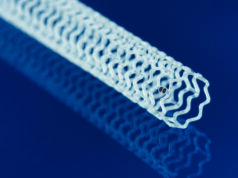
A retrospective multicentre study has concluded that internal iliac aneurysms that are less than 4cm in diameter have a low risk of rupture, and suggested that the threshold for elective treatment of the condition may be safely increased from 3cm (current practice) to 4cm.
“As internal iliac aneurysms are rare, existent data are scarce and are mostly based on case reports and small retrospective series. Based on that, the common used diameter threshold for elective treatment is 3cm,” said Matti Laine, Helsinki University Hospital, Helsinki, Finland, who presented the study results at the European Society for Vascular Surgery Annual Meeting (ESVS; 23‒25 September, Porto, Portugal). He noted that, because of the lack of strong scientific data on the subject, the objective of this study was to evaluate the size of the internal iliac aneurysm at the time of rupture.
From 1995 to 2015, 66 patients (mean age 77 years, 15% women) with internal iliac artery aneurysms were enrolled in Hungary, Sweden, Australia, New Zealand, Finland, Norway and Germany. Laine noted that internal iliac artery aneurysms are usually associated with other aneurysms—in the study, 48% of patients had bilateral internal iliac artery aneurysms, 62% had also a common iliac artery aneurysm, 50% had also abdominal aortic aneurysm, and 37% had both. Twenty eight per cent had an isolated internal iliac artery aneurysm. Laine said that treatment of the ruptured internal iliac artery aneurysms and outcomes were collected from CT scans and patients records.
The investigators found that the mean diameter of ruptured internal iliac artery aneurysms was 6.8cm. One patient’s aneurysm diameter was under 3cm and under 4cm in four patients. Laine highlighted that isolated internal iliac artery aneurysms were smaller than internal iliac artery aneurysms with concomitant aneurysms (5.7cm vs. 7.3cm). He explained also that most patients (74%) underwent repair by open surgery with ligation in most cases and oversuturing after opening the aneurysm sac. Coiling and covered stent/stent grafts were used for the endovascular repair cases (26%).
He told ESVS delegates: “The treatment results were surprisingly good with overall mortality rates after 30 days of only 15%, with 18% for open surgery and 6% for endovascular repair,” said Laine.
Laine concluded that rupture of internal iliac aneurysms of less than 3cm in diameter is “very rare” and that “only a few ruptures of aneurysms smaller than 4cm occur.” This suggests, he said, that the threshold for elective treatment of internal iliac aneurysms may be “quite safely increased to 4cm.” He also noted that the mortality rate of patients with ruptured internal iliac artery aneurysms was under 20%, which seems to be lower compared to mortality in patients with ruptured abdominal aortic aneurysms.













